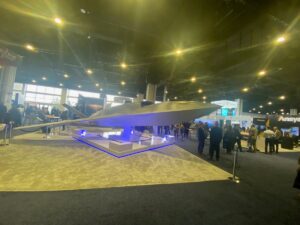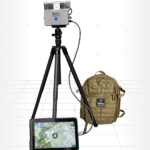
Anduril Industries and General Atomics may conduct first flights in the next year of their Fury and Gambit offerings for the first increment of the U.S. Air Force Collaborative Combat Aircraft (CCA) program--first flights that could result soon thereafter in the beginning of developmental test (DT) under the Air Force CCA Experimental Operations Unit at Nellis AFB, Nev.'s 53rd Wing. On display at the conference are what the companies call full-scale representations of their CCAs. Anduril's Fury has a lower…














